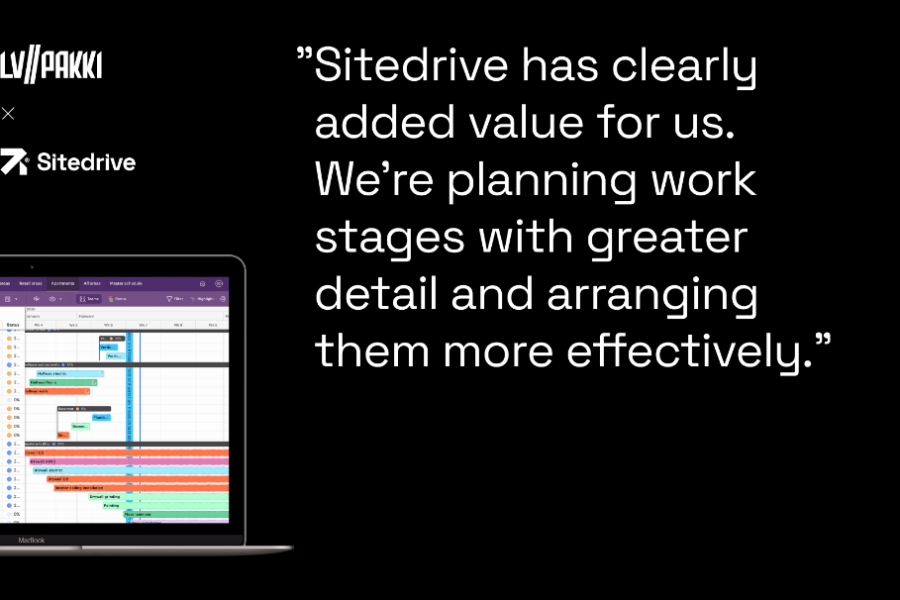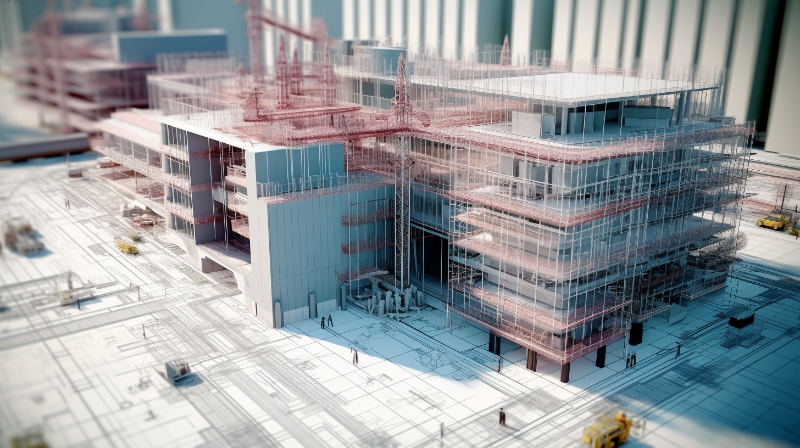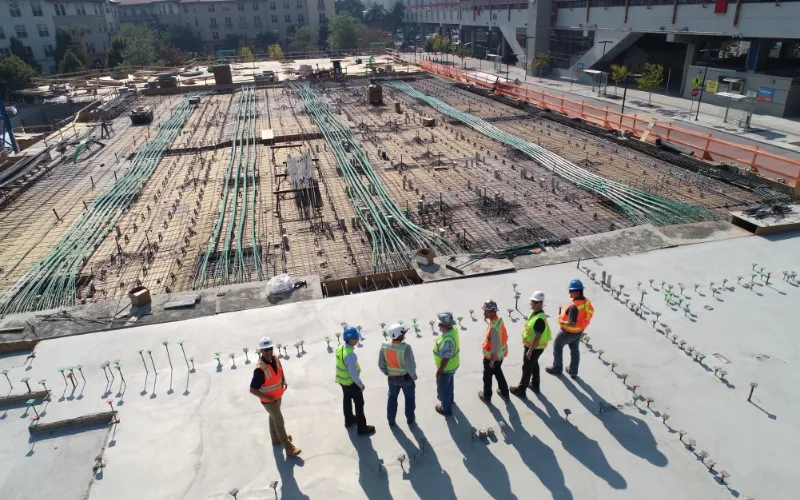Ever felt like it’s hard to find construction data? Spreadsheets, post-it notes, memos, emails, chats, you name it – information is everywhere but nowhere when you need it.
It is unstructured. And if you can’t connect and analyze the data, you can’t use it for smart decision-making.
Let’s dive into how to find these pieces and use them to boost your site’s productivity.
What type of construction data should you collect?
From an efficiency perspective, you should focus on data that helps you complete your projects as quickly as possible.
This means location and time are the most important pieces of your data puzzle. They tell you what type of locations your project consists of and when these locations need to be completed. Location-based schedules help you understand this, as they describe the spaces, job site locations, and construction timeframe.
Location-based schedules form a frame for other important data: task data and product data.
Once you have these key data blocks—location, time, task, and product— in order, you’ll get context for other essential data: quality, conditions, and finance.
Let’s take a closer look.
Location data
= What type of locations make up the building?
Industrial construction helps you see the building as a product that consists of various locations, like rooms, installation areas, or cross-area intervals. Location data can be easily merged into the IFC model during the planning phase.
Time data
= How long it takes to complete different locations?
Product data
= What type of materials do you need to complete the locations?
At its simplest, this is a bill of quantities, but it can also be refined into a list of materials.
Task data
= What do you need to complete the different locations?
In most cases, the job site tasks are still described generically, such as “building a partition wall on the ground floor.” The task still lacks details of the exact work phases and materials. This information currently exists only in the workers’ minds.
Once you combine task data with location data, you can break it down into smaller, more manageable pieces. This is essential for efficient building. The more accurately you can describe the tasks, the better you understand what needs to happen. Such as:
➡️ In which order should the tasks be completed?
➡️ What obstacles are preventing the completion of these tasks?
Quality data
= Does the product meet the agreed-upon standards?
Once you combine quality with other data, you can make it part of the production process and embed it into tasks. This way a location is not completed before the quality check is done. If quality issues arise, you can go back and see which methods were used.
Condition data
= Do the conditions allow you to stick to the plans?
Condition data can share information, for example, on:
➡️ Humidity and temperature levels: are ideal for quick drying of the materials?
➡️ Particulates: Are the working conditions safe for the workers?
You can use sensors to track and report the conditions. However, condition data is only useful once you connect it with location and task data. This way you can instantly see if you can start the tasks on-site on the planned schedule.
Financial data
= How much does this cost?
All construction sites gather financial data, but to get insights beyond pennies, you need to connect this to the product data. It helps you understand:
➡️ How much money you have used so far?
➡️ What is the prediction of total costs?
➡️ Are there additional expenses – or is there a potential risk for higher costs?
You should also note that calculating costs is not limited to money. You’ll most likely need to start considering the carbon footprint sooner rather than later.
What benefits does data-driven management bring to construction companies?
Research shows that only 20% of the time spent on-site is used for productive work. The remaining time goes to confirming, waiting, redoing, and addressing obstacles.
Data-driven construction enhances production flow and creates a competitive advantage.
Knowing the product and its tasks helps you find problems sooner and fix them. Without real-time data, you can only track progress and react, but not forecast and actively control the project.
Leading with data ensures you’ll get visibility on things like:
- How long do each work stage actually take?
- Which work phases and tasks tend to exceed the planned duration? What are the underlying reasons for the delays?
- Are there any similarities between the tasks performed across different projects, spaces, and work stages?
- What factors create waste in time, materials, space, repeating tasks, mistakes, or storage?
The value from a business perspective is obvious: the better the flow, the more efficiently you can build. But there are also benefits for the on-site management and crew.
Traditionally, the team has been carrying the project’s profit margin on their shoulders. The more expertise they have, the better the success.
This is challenging for more novice workers and managers, but it’s not fun for more experienced workers either. They need to constantly plan and document the same tasks.
Once you gather enough data, you can create standardized models and templates, and the team no longer has to constantly reinvent the wheel. This reduces last-minute changes and disagreements on-site.
📚 Are you interested in this type of thinking? Read more about lean construction
How to build a foundation for data-driven construction management?
You need two things for construction data management:
1️⃣ Software to store the data in a standardized format
2️⃣ Clear processes and routines that ensure data is collected
Let’s take a closer look.
#1 Collect data in a standardized format in software
Your software palette should include at least the following:
- The architects’ project plan as a 3D model described through the spaces and materials needed in them. This creates a data structure for everything else: location, product, and task data get standard labels, and you get a list of materials.
- One software for schedule planning and management. The general and weekly schedules need to be built on the same data and tracked in the same place. The schedule should also be easily editable to make sure it always reflects the actual situation on-site.
- Reporting models and construction analytics to help you collect and analyze data. Ideally, this data should be obtained as a byproduct during basic site management tasks.
When choosing software, consider the following factors:
💡 The data in all your software is in the same format and can be integrated.
💡 You have reports and can track changes as they happen, allowing you to use the insights for development during construction projects.
💡 You only have one truth, with no duplicates. If the task list involves installing a light fixture, you shouldn’t have conflicting information on when the installation will take place. Everyone on-site should update the same schedule rather than maintain separate schedules that won’t communicate.
💡 Your data is categorized. Any info that lives in an open text field is not useful.
👉 Check here how to choose the right construction scheduling software
#2 Create clear routines for data collection
To ensure that your data is accurate and up-to-date, you need clear processes for collecting it. So don’t treat data collection as a separate task but integrate it into your other processes.
You should:
- Plan schedules and monitor progress in one software and
- Ensure readiness levels and obstacles are documented during daily site meetings.
👉 5 Real-life Use Cases on How to Leverage Sitedrive Data for Construction Management
Start data-driven management with Sitedrive
Sitedrive is schedule management software that combines time, location, and task data into one place. It helps you plan and manage your sites with real-time construction data.






